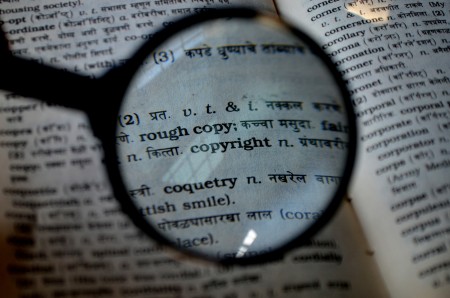
Copyright can be confusing, admits U of G copyright officer Heather Martin.
Can you use a diagram you found in a journal article to make a point in an essay you’re writing for class, or do you need to pay the author? When a professor directs the class to a set of articles and excerpts for extra reading, is that a breach of copyright?
Martin says the answers to those questions are often “it depends.” But the “fair dealing” exception in the Canadian Copyright Act means that copying material in reasonable amounts for educational purposes is usually permitted.
Copyright laws protect those who create original written, artistic or other work by requiring those who want to use it to get permission, which may include payment. The fair dealing exception in Canada’s Copyright Act allows the copying of materials without permission and without paying the copyright holder, providing certain conditions are met, such as the proportion of the work being reproduced and the purpose of the copy.
In 2012, “education” was added as one of the fair dealing purposes in the Copyright Act. This was also the year that several Supreme Court rulings provided clarity on the scope of fair dealing.
“The Copyright Act tries to balance the rights of creators and the rights of users,” says Martin. “The fair dealing exception is very important to education. Copies made for educational purposes, for study and for research, as well as criticism and review, are all acceptable in terms of purpose.”
Martin managed copyright as part of her work in the library for about 30 years before taking on the new role of copyright officer. “It was really formalizing what I had been doing all along,” she says. Over the years she’d become very familiar with the ins and outs of Canada’s copyright laws.
What happens if you do copy something you shouldn’t have? “In many cases, nothing,” says Martin. “But if you’re posting it on a website or using it for a commercial purpose, it will be much more visible.” If the copyright owner sees you have used his or her material, you may receive a notice to remove the material, a demand to pay a royalty for its use or a lawsuit. In Canada, if your copying was for a non-commercial purpose, the statutory damages limit is $5,000.
Martin says one of the most common mistakes people make is assuming that everything on the Internet is free to use. “Most articles and images found online are covered by copyright,” she says. “But it can often be impossible to determine where the material originated, and who the copyright owner actually is.” Fair dealing still applies to many situations, and Creative Commons or other free-to-use licenses provide access to available content. Checking a website’s terms and conditions may also alert you to how the content can and cannot be used.
It’s just as common for people to err in the opposite direction as well, assuming that using a quote or image from a published book requires permission and payment, when many would be permissible under the fair dealing exception, says Martin.
“We want to remind people that we have this right and shouldn’t be afraid to copy and use materials,” she says. “We all create content and we all use content. Both sides should be important to us.”
To learn more about copyright and view frequently asked questions, visit the Library website, or email Heather Martin at fairdealing@uoguelph.ca.